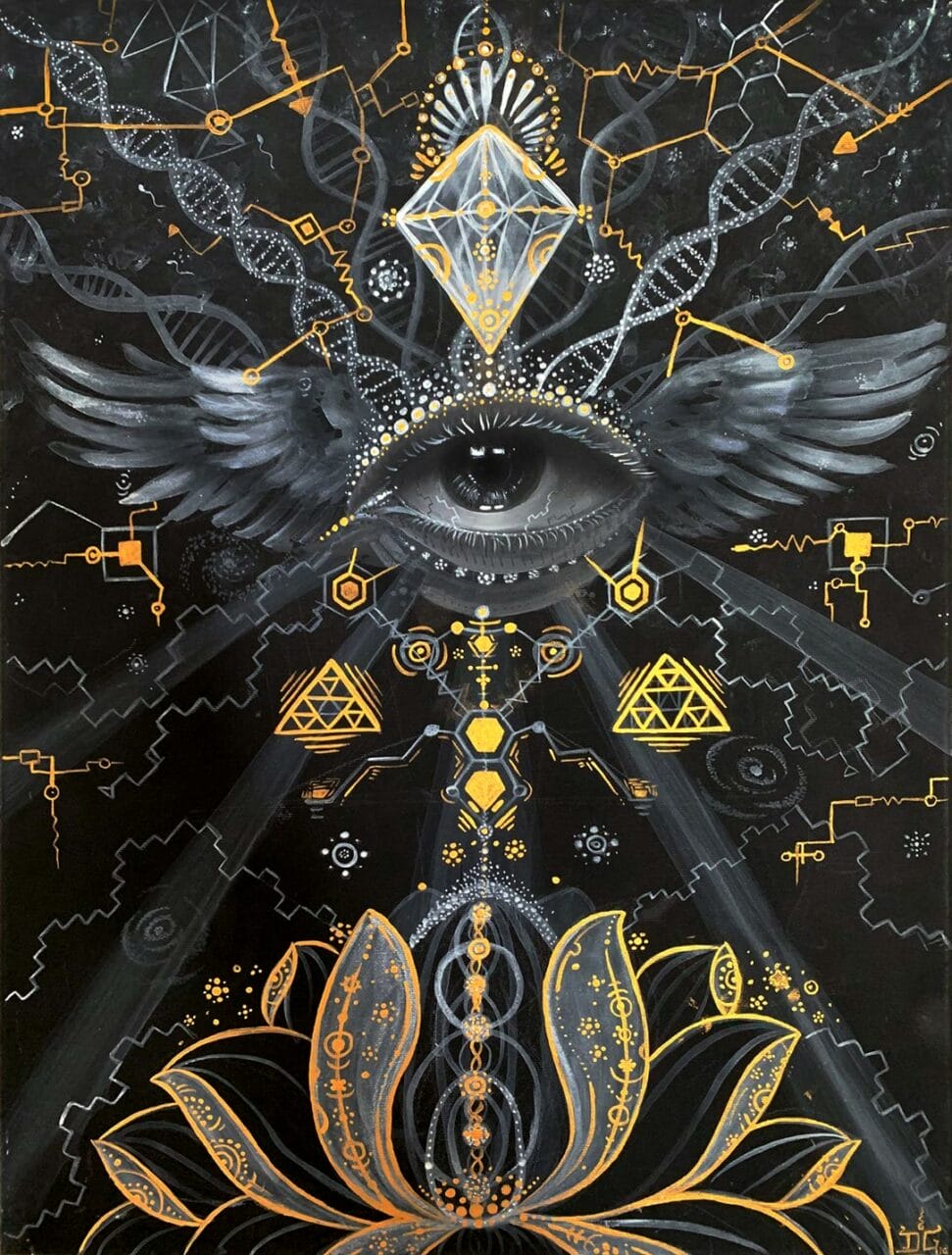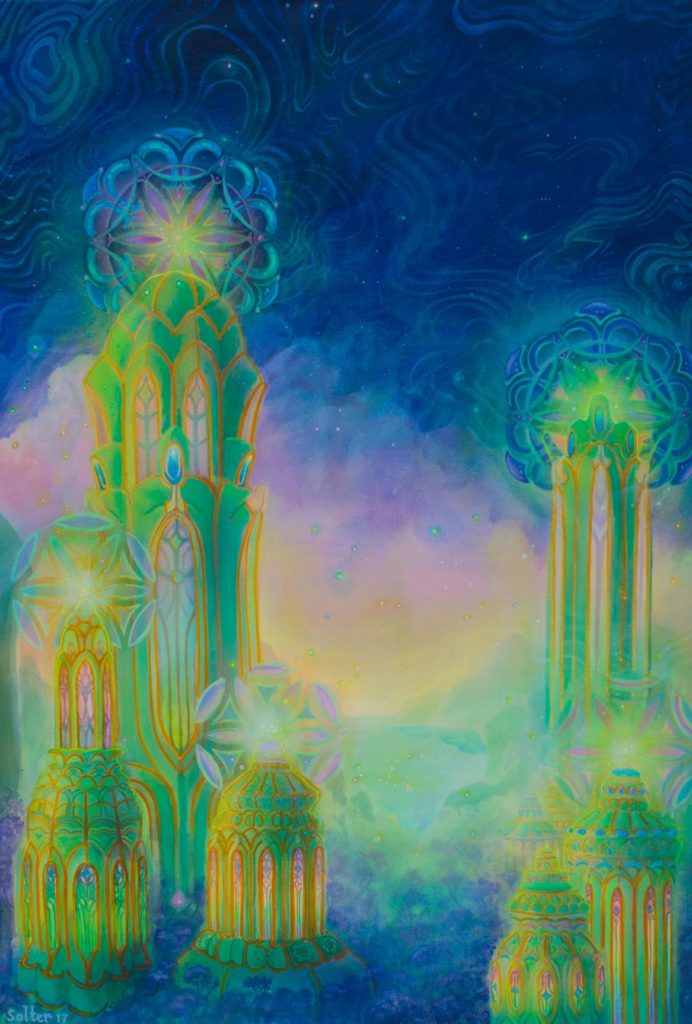
© Uni Kaya
A Historical Overview of Shrooms
Tracing back to 9000 BC, Shrooms has a rich history. These unique mushrooms, consisting of over 200 varied species, are rich in psilocybin, a compound known for inducing hallucinogenic effects. These effects may range from altered perception and sensory hallucinations to transformative spiritual experiences. For millennia, these mushrooms have been integral to spiritual ceremonies, religious practices, and rituals across diverse cultures and tribes, predominantly in North and South America.
Shrooms in Ancient Times
Throughout history, many cultures have leveraged natural psychedelics. Evidence from the Sahara Desert suggests that humans were consuming Psilocybe Cubensis more than 7000 years ago. Archaeological findings have revealed depictions of this mind-altering substance in prehistoric art across various regions. For instance, indigenous tribes of North Africa in the Sahara portrayed its use in their paintings dating back to around 9000 BC. Similarly, the renowned Selva Pascuala mural rock painting in Spain, estimated to be about 6000 years old, indicates the use of Psilocybe Hispanica in religious ceremonies. The influence of these substances on cultural evolution, religion, art, societal norms, and everyday life is increasingly apparent. This substance has undoubtedly left a deep mark on our culture and society.
A Historical Summary of Shrooms Use
Over the course of history,magic Shrooms has been utilized for a lengthy duration. The psychoactive substance we know today has crossed countless centuries, with diverse customs related to its use. Who can resist nature’s offerings? It’s time for Magic Mushies Canada to delve into the historical journey that has brought Shrooms to its current standing.
Notable Milestones
- Dried Shrooms has long been used in traditional rituals and spiritual healing practices. Today, it serves as a treatment for mental health conditions.
- Shrooms became a symbol of the hippie culture, playing a significant role in the psychedelic revolution and advocating its recreational use.
- Key figures like Wasson, Sabina, and McKenna are credited with introducing psilocybin to the contemporary world.

© Jonathan Solter
Backing the Stoned Ape Theory
The Stoned Ape Hypothesis was put forth by Terence McKenna, who suggested that psilocybin might have contributed to the evolution of human cognition. Despite facing some critique, the intriguing aspects of this theory are hard to deny.
Ancient Communities and Sacred Ceremonies
Antiquated civilizations symbolized cubes through various forms of art, indicating the ritualistic use of Shrooms. Mayans and Aztecs utilized it for communicating with divine beings. In the culturally rich Aztec society, it was referred to as “teonanácatl“, meaning “flesh of the gods”. The concept of a psychedelic experience was alien to them, leading them to interpret it as a holy entity. Moving north to Siberia, hallucinogenic Shrooms were used by Siberian shamans. They specifically employed the hallucinogenic substance (Shrooms) known as “Amanita Muscaria” for spiritual healing and traditional rituals, despite its poisonous nature. This practice dates back nearly ten thousand years. In African tribal rituals, especially among the Congo and Zimbabwean tribes, cubes were employed for communicating with ancestors, inducing visions, and promoting spiritual healing. These ancient societies provide context for contemporary psilocybin use. They revered this substance for its connections to the divine and its ability to produce mystical experiences.
Shrooms in Legends and Folklore
Many stories, including those by Gordon Wasson, have highlighted the connection between Shrooms and the mystical world, accentuating its role in folklore and mythology as a medium for divine communication and enlightenment. In ancient India, the Soma—a ceremonial beverage mentioned in the Vedas—was thought to induce altered states of consciousness. Scholars like Wasson have speculated that it was made from psychoactive plants, specifically fly agaric. Some even suggest that this ancient drink might have contained a mixture of different plants. Regardless of its origin, psychedelic history indicates that Soma was used to manifest sacred symbols during rituals, acting as a portal to higher wisdom or spiritual enlightenment.
The Contemporary Era
A Brief Overview of the
Beginnings
Historical documentation from the time before the colonization of the Americas shows that Mayans and Aztecs utilized psilocybin Shrooms. During the 15th and 16th centuries, Spanish rulers deemed its use as barbaric and subsequently outlawed it. Despite the ban, shamans surreptitiously persisted in using magic Shrooms, thus sustaining their cultural heritage over four centuries.
Resurgence in the Western World
The 1950s saw a revival of these substances in Western society, primarily due to the groundbreaking work of individuals like R. Gordon Wasson, Roger Heim, and Albert Hofmann. They traveled to Mexico and managed to extract the two psychedelic components (psilocybin and psilocin) from the Shrooms obtained from the Mazatec tribe. Wasson later shared his discoveries, uses, and insights regarding magic Shrooms in Life magazine. His articles and personal narratives prompted recognition of the substance as a potent hallucinogenic. By the arrival of the 1960s, the substance had become emblematic of the Hippie culture and regarded as a conduit to spiritual exploration. However, its use also spurred significant debate and triggered a revolution in the recreational use of hallucinogenic substances.
Subsequent Progress: Worldwide Prohibition
In 1971, the United Nations Convention on Psychotropic Substances classified psilocybin as a Schedule 1 illegal drug, alongside Lysergic Acid Diethylamide and N, N-Dimethyltryptamine. They were all considered to have no medicinal value and a high potential for misuse. This led to sweeping criminalization in Western nations, including Canada and the U.S., significantly limiting the spiritual and therapeutic uses of the substance.
The Modern Revival of Psilocybin
In recent years, we’ve seen a relaxation of the strict laws around psilocybin use, beginning with its decriminalization. This shift is in line with the UN’s provision for member nations to regulate the substance according to their own policies. Simultaneously, an expanding body of research and clinical trials related to psychedelics and consciousness strongly advocates for potential medicinal uses of psilocybin. A 2021 study investigating the therapeutic use of psychedelics indicates that the 1970 prohibition significantly hindered further research. However, a preliminary study in 2004 reignited interest in psilocybin, suggesting potential applications in neuropsychiatry, especially for treating mental health conditions such as:
- Depression, Anxiety, and Stress
- Post-traumatic Stress Disorder (PTSD)
- Obsessive-compulsive Disorder (OCD)
- Drug Abuse (Aiding in Addiction Recovery)
- Excessive Alcohol Consumption and Drugs)
The Influence of Media and Art
The topic of psychedelic cubes has garnered such widespread attention that it is now represented in a range of formats. Different forms of media, art, and literature have reignited the community’s interest in these substances. Movies like “Fantastic Fungi” by Director Louie Schwartzberg, and documentaries that delve into their therapeutic properties, have enriched public understanding of their psychological and physiological effects. Michael Pollan, the author of “How to Change Your Mind,” has studied the use of psychedelics for mental health and spiritual enhancement, thereby revitalizing interest in their societal and therapeutic value.
Prominent Historical Advocates of Fungi
- María Sabina: A Mazatec shaman and poet from Mexico, Sabina played a role in introducing the Western world to cubes. She allowed Wasson to observe her Shrooms rituals.
- Gordon Wasson: Wasson, a writer, is recognized for bringing this drug into the global spotlight. His comprehensive account of his experiences with Sabina contributed to a broader understanding of its local use.
- Terence McKenna: A leading proponent of psychedelics, McKenna played a pivotal role in emphasizing their cultural and philosophical relevance. Through his speeches, writings, and research, McKenna popularized the “Stoned Ape” theory, portraying it as a cognitive enhancement tool that impacted society.
The Timeline – A Concise Overview
with TRD.
| Prehistoric | Stone art found in the Sahara, Africa, depicts prehistoric use. | |
| Ancient | The Maya and Aztec civilizations incorporated teonanácatl into their religious and spiritual rituals. | |
| 16th Century | Use was discouraged due to its association with Indigenous beliefs. | |
| 18th Century | In 1799, the drug’s “intoxicating” effects surfaced when four children accidentally ingested Psilocybe Semilanceata, highlighting the potential negative outcomes of its use. | |
| 20th Century | The drug was brought to the Western world by Wasson and Sabina, sparking a psychedelic revolution among the hippies. The UN sanctioned the possession and consumption of the substance. | |
| 21st Century | Clinical trials to verify its medical potential are
| The popularity of psychedelic substances, such as Psilocybin, is on the rise. Consequently, Health Canada has approved a Special Access Program for their application. |
|
Emergence of the Psychedelic Era and the Path to Enlightenment | Purchase Shrooms Online at Magic Mushies Canada
The consistent use of cubes at Magic Mushies Canada, reinforced by robust scientific research, will persist in expanding until they achieve worldwide acceptance. Magic Mushies Canada’s online Shrooms store stands poised to facilitate this evolution. Our extensive array of products attracts customers, encouraging them to undertake the enigmatic and therapeutic journey with psilocybin. Secure your preferred items from Zoomies today.
Commonly Asked Questions
No, Amanita Muscaria does not contain the active compounds present in Psilocybe Cubensis. Instead, the psychoactive substances in fly agaric are muscimol and ibotenic acid. One prevalent hypothesis regarding Soma’s origin implies it to be a combination of various psychoactive plants. Similarly, ayahuasca is a mind-altering drink. However, the only link between the two is the perception of soma as an ayahuasca analogue. Upon being classified as a toxic Shrooms, it was scrutinized for potential Shrooms poisoning. Today, we recognize it as the Psilocybe Mexicana.

